
1983 was perhaps the year that the eighties came of age. It’s safe to say that the tracks that sold well are still part of the fabric of the UK’s culture. That’s not to say that the UK singles chart 1983 stood out particularly. But it’s worth noting how the music of that year encapsulated the spirit and innovation of the decade.
Iconic tracks from artists like Culture Club, Bowie, The Police, and Michael Jackson dominated the charts. They wielded an influence that has been felt ever since. The continued emergence of new wave, synth-pop, and the evolution of rock and pop genres reflected a dynamic and transformative period in music history.
A good place to start looking at 1983’s hits is the official Top 40 Best-Selling Songs for the year. It gives a real feeling of the vibe of the time, filled, as it is, with some proper heavyweights. There are some great tracks for dancing to. There are emotional ballads; rock classics; R&B and soul; and at least one reggae-influenced cover ?
I added three singles to my record collection in 1983. The first one is Joe Fagin’s double A-sided pair of theme tunes for TV’s smash hit of the year, Auf Wiedersehen, Pet. The opening theme was Breakin’ Away whilst the closing theme was That’s Livin’ Alright.
The other two were big sellers, finding their way into the list of top-selling singles for 1983. The dates I noted on them show that they were most likely either Christmas or Birthday presents. First, is The Flying Pickets’ cover of Yazoo’s seminal track Only You. And Slade’s return to the top ten after eight years with My Oh My. More about these later.
The Best-Selling UK Singles of 1983
Now, let’s get on and find out what made 1983 such a standout year. We’re going to start with the unforgettable top 5 singles. Then, we’ll look at the artists who left a lasting mark. Let’s buckle up for a journey that revisits the best of the year.
We’ll look closer at legends like Paul Young, New Order, The Eurythmics, and Eddie Grant. Plus, we’re not forgetting the heavyweights like Paul McCartney, Michael Jackson, Rod Stewart, David Bowie, and the recently-turned-solo Lionel Richie.
A common theme of the eighties was the diverse and innovative nature of the music scene. The different genres and styles hitting the charts are a testament to that. Heck, there’s even an American by the name of Springsteen who had no UK singles in 1983.
What’s more, Prince, barely registered in the UK singles chart in 1983. Perhaps his most famous song, 1999, struggled to number 25 in 1983, although when re-released in 1985 with Little Red Corvette it reached number 2.
Let’s now get into the nitty-gritty of the best-selling singles of 1983 in the UK. There is perhaps no surprise that the top 5 is packed with musical goodness.
The UK’s Top Selling Single of 1983
With almost a million units sold, Karma Chameleon was the UK’s top selling single of 1983. And what a track. It’s a magic, pure pop tune. In 1982, the band had scored a number one with Do You Really Want To Hurt Me. Building on that, plus Boy George’s distinct voice and the band’s knack for catchy hooks, this song cemented the band’s position in popular culture (pun, unavoidable). Karma Chameleon is symbolic of the 80s with its vibrant, feel-good energy.
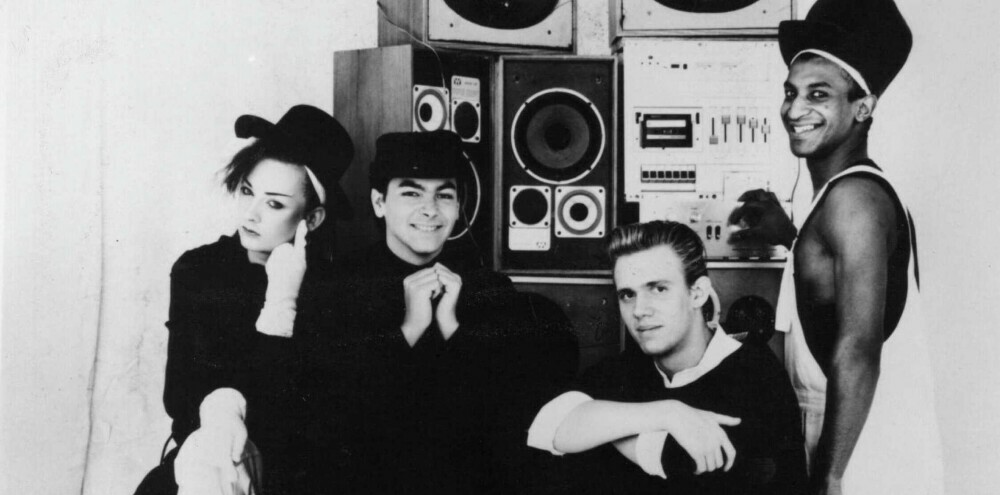
Released in September 1983, it was the lead single from Colour by Numbers, the band’s second album. Its upbeat tempo, catchy chorus, and vibrant instrumentation made it an instant hit. It spent six weeks at number one on the UK singles chart.
It was a global sensation, topping the charts in numerous other countries. This included the United States, where it was the band’s only number-one hit on the Billboard Hot 100. It spent 3 weeks there in 1984.
Boy George’s lyrics explore many themes. There’s love, deception, and the fluidity of identity. The memorable chorus encapsulates them all:
“I’m a man without conviction,
I’m a man who doesn’t know,
How to sell a contradiction,
You come and go; you come and go.”
The colourful and whimsical music video, featuring the band in a 19th-century Mississippi riverboat setting, further cemented the song’s popularity and showcased Boy George’s flamboyant style.
More On Boy George
George Alan O’Dowd was born in Kent in 1961 of Irish descent. The charismatic frontman of Culture Club was a key factor in the band’s success. The first thing many noted abt him was his androgynous appearance. Characterized by his distinctive makeup, flamboyant clothing, and braided hair, Boy George challenged traditional gender norms. So, he became an icon of the 1980s.
His unique look and persona were more than a gimmick. His was a bold statement of individuality and self-expression that resonated with fans around the world. Beyond his visual impact, Boy George’s soulful voice and emotive delivery were central to Culture Club’s appeal.
George connected deeply with listeners. He conveyed vulnerability and emotion in songs like Do You Really Want to Hurt Me and Karma Chameleon. His was open about his sexuality and struggles with addiction. This made him a relatable and inspirational figure for many.
Billy Joel with Uptown Girl
The second highest-selling single in the UK in 1983 was New Yorker Billy Joel with his hit Uptown Girl. It is a vibrant, catchy tune that became one of his most iconic hits. Featured on his album An Innocent Man, the song tells the story of a working-class man who is infatuated with a sophisticated, high-class woman.
It has an upbeat tempo and a doo-wop style which both pay homage to the music of the 1950s and 1960s. Uptown Girl was Billy Joel’s only number one in the UK singles chart. It spent 5 weeks there in November and December 1983. The Flying Pickets’ version of Only You knocked it off the top spot, beginning its reign as the Christmas number one.
It was a worldwide commercial success, reaching number three on the Billboard Hot 100 and topping the charts in several countries besides the UK. The song’s memorable melody and relatable lyrics have ensured its lasting popularity over the decades.
Uptown Girl was inspired by Billy Joel’s then-girlfriend, supermodel Christie Brinkley. However, it had been conceived with Elle Macpherson in mind. Of course, because she appears in the video, it shall forever be associated with Christie Brinkley.
The video features Joel as a mechanic captivated by Brinkley’s glamorous, sophisticated character. A perfect complement to the song’s narrative.
Number 3 – Red Red Wine by UB40
Birmingham group UB40 put a reggae twist on Neil Diamond’s 1967 classic Red Red Wine. Its relaxed, chilled-out vibe was perfect for late summer and brought further mainstream exposure for reggae.
It’s a laid-back sound. A reggae rhythm and smooth vocals transform the original into a relaxed, feel-good track. It spent 3 September weeks at number one in the UK Singles Chart, becoming one of UB40’s most successful hits. Then Culture Club’s Karma Chameleon came along.
Number 4 – Let’s Dance By David Bowie
Bowie was always ahead of his time. Let’s Dance proved he could master any genre. It’s a vibrant, dance-rock anthem that marked a significant shift in his musical style. The dance element is provided by Nile Rodgers, who Bowie had met and bonded with in the New York nightclub Continental.
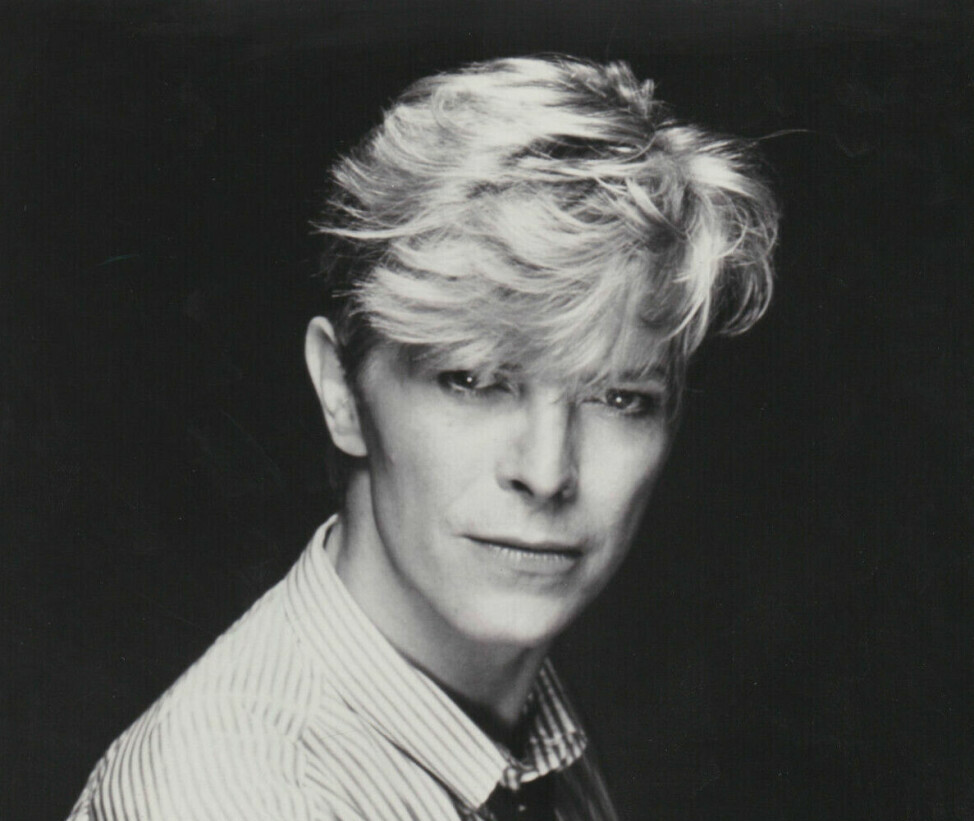
Initially, Rodgers had been of the impression that Bowie wanted to produce an art-rock album in the style of Scary Monsters. This impression was confirmed when Bowie played him a demo of Let’s Dance. However, Bowie insisted that Rodgers do his thang, and of course, he did.
The track features a catchy, upbeat rhythm, a prominent bassline, and Bowie’s distinctive vocals. It became one of his biggest hits, topping the UK singles chart for 3 weeks in April. It sold well elsewhere around the globe too. It was number one on at least ten national charts, including the Billboard Hot 100.
This fusion of rock and dance elements introduced Bowie to a new generation of fans. At the same time, the memorable video helped Bowie solidify his reputation as a versatile and innovative artist.
Number 5 – Total Eclipse Of The Heart By Bonnie Tyler
Total Eclipse of the Heart, released in February 1983, is a powerful rock ballad by Welsh chanteuse Bonnie Tyler. If it comes over as a little overblown, it’s probably because it has the fingerprints of Jim Steinman all over it.
So, we have the dramatic orchestration and emotive lyrics, delivered by Tyler with her distinctive raspy vocals. It tells a story of heartbreak and longing, capturing the intensity of lost love. The song has an epic, theatrical style. Combined with its memorable chorus, this helped it become a massive hit, topping charts worldwide.
The track’s music video, with its gothic and surreal imagery, further cemented its iconic status. The song spent 2 weeks at the top of the UK singles chart. It also spent 3 weeks in the top 5, challenging The Eurythmics’ Sweet Dreams (Are Made Of This), Michael Jackson’s Billie Jean, and Bowie’s Let’s Dance.
Total Eclipse of the Heart was knocked off the number one spot by Duran Duran’s Is There Something I Should Know? and it remains one of the defining songs of the 1980s and a staple of Tyler’s career.
Billie Jean by Michael Jackson
Further down the list is Michael Jackson’s Billie Jean. It’s just one of those songs that bridges the gaps. Whether it be an age gap or a what-genre-do-you-like gap, Jackson certainly covered all the bases with Billie Jean. The second single from Thriller, Billie Jean is one of his most iconic songs.
The song is known for its distinctive killer bassline, compelling lyrics, and Jackson’s signature vocal style. It tells the story of a woman named Billie Jean who claims that the narrator is the father of her child, which he denies. The track was a massive commercial success. It reached the top ten in most countries and the number one spot in the majority of those. Critics loved it too.
Its music video, featuring Jackson’s famous moonwalk, became a cultural phenomenon and solidified his status as the “King of Pop.” Billie Jean is a timeless classic in pop music history.
True by Spandau Ballet
True by Spandau Ballet is a quintessential 1980s ballad, released in 1983 as the title track of their third studio album. As with all the band’s material, the track was written by Gary Kemp. Inspired by Clare (C.P.) Grogan, the song is renowned for its smooth, soulful melody and heartfelt lyrics.
It became a massive hit, reaching number one on the UK singles chart where it spent 4 weeks in April and May. It also reached number four on the Billboard Hot 100, making it Spandau Ballet’s biggest hit single.
Together with the track’s iconic saxophone solo, Tony Hadley’s emotive vocals mean that True is a timeless classic. It’s often associated with romantic moments and nostalgic memories. True’s enduring popularity continues to influence contemporary music and pop culture. For example, PM Dawn’s huge 1991 hit Set Adrift On Memory Drift features a sample.
Spotlight on Key Artists
Paul Young had a way of pouring soul into every note. His cover of the Marvin Gaye song Wherever I Lay My Hat (That’s My Home) was a huge hit. Effectively Young’s solo debut, it spent 3 weeks at the top of the chart in July and August 1983.
The combination of Young’s soulful voice and heartfelt lyrics would go on to make him a staple of the charts. It was said of Young that if you want to understand why he was such a standout, you should listen closely to how he conveys emotion in his songs. It’s like he’s singing directly to you.
Joy Division was a post-punk band. Lead singer Ian Curtis died in 1980. After his death, the remaining members decided to continue making music. They formed a new band called New Order.
The remaining members of Joy Division were Bernard Sumner, Peter Hook, and Stephen Morris. In turn, they recruited Gillian Gilbert, whom they already knew. New Order adapted Joy Division’s dark, industrial sound. They added electronic and dance music elements.
One example of the new sound was Blue Monday. It was nothing short of revolutionary. This track was the band’s fourth UK single release. When it was played, dancers were led, mesmerised, to the dancefloor. The use of synthesizers and drum machines set the stage for future dance music. If you want to explore the evolution of electronic music, Blue Monday is a must-listen.
The dynamic duo Annie Lennox and Dave Stewart, better known as The Eurythmics, brought something unique to the table. Their hit Sweet Dreams (Are Made of This) was a blend of synth-pop and rock that you couldn’t ignore. Annie’s powerful vocals combined with Dave’s production genius made this track an instant classic. If you’re exploring the sound of the 80s, you can’t skip The Eurythmics.
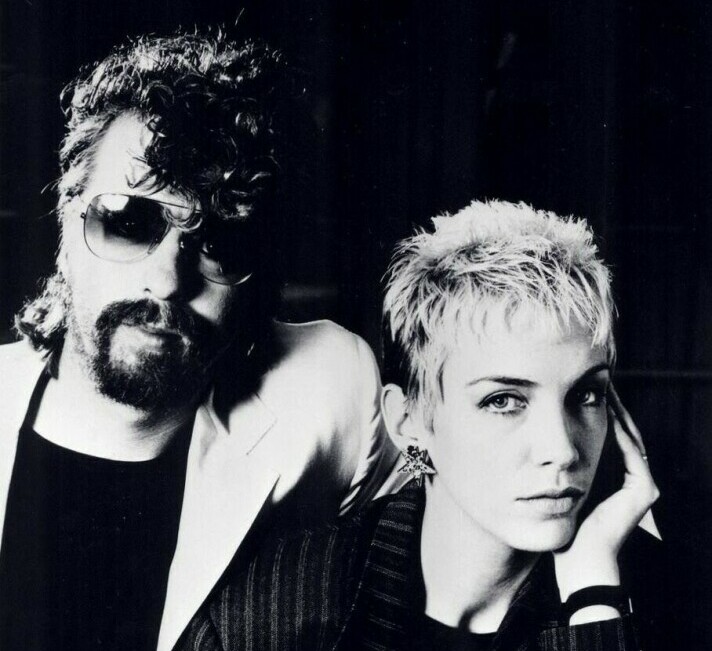
I bought many of the later singles by The Eurythmics. At this early stage of the decade, though, I didn’t have the wherewithal to buy everything that I liked. Like many other teenagers of the time, I had my trusty tape deck and a couple of C90s. They were always full of the latest, freshest sounds.
Make no mistake, I was very much into the popular end of stuff. But when that included The Eurythmics, Depeche Mode, The Human League, Bowie, Madness, Adam and The Ants, The Police, Duran Duran, and so on.
Obviously, the charts reflected what was popular – but this was based only on record sales. These in turn were in part influenced by radio play. Nowadays, a broader range of sources are used to reflect music consumption trends. They include physical sales, but in practice, streaming (75%) and downloading (20%) count the most. It’s odd, that our practice of recording them off the radio, which was, to all intents, downloading, had no influence on chart positions.
Another great track from 1983 was Eddie Grant’s Electric Avenue. Like his later hit, Gimme Hope Jo’anna, this was a track with a message. It takes its title from the street of the same name in Brixton.
It was written not long after the Brixton riots of 1981, and it highlights social and economic struggles. But it’s a positive, empowering message. It emphasizes resilience and the fight against oppression in urban communities.
Musically, it combines elements of reggae, rock, and pop. It reached number 2 in the early part of 1983, becoming an anthem that resonated with many. The song’s socially conscious lyrics and infectious rhythm made it a standout in a year full of memorable music. If you’re diving into the era, Electric Avenue is a track that shouldn’t be missed.
Chart Stalwarts
A strong point of the charts in the eighties was the wide range of artists featured. We had a plethora of tracks that appealed to those of us of a certain age. There were also hits from the stalwarts of pop music. We’ve already heard about David Bowie’s and Michael Jackson’s contributions. Other refugees from the 1960s and 1970s lurked too.
Ten years and more from the end of The Beatles, and Paul McCartney was still producing some great music. In the seventies, he had scored some momentous tracks as a member of Wings. Perhaps most memorably with Mull Of Kintyre/Girls’ School in 1977.
With its peak position of number 8 in the UK singles chart, McCartney had previously collaborated with Michael Jackson in 1982 on The Girl Is Mine. This year’s track, Say Say Say, saw them reach number 2 in the chart. A timeless hit, the track highlights both legends’ strengths. McCartney’s classic rock vibes and melodic prowess, and Jackson’s irresistible pop sensibilities.
Ageless rocker Rod Stewart maintained his record of having at least one single in the top twenty every year since his solo debut, 1971’s smash, Maggie May. His raspy voice unmistakable, Baby Jane, reached number 1 in the early summer of 1983.
This was followed by a number 3 position for What Am I Gonna Do (I’m So In Love With You). Stewart’s ability to keep himself fresh and relevant; his charisma and his energy were writ large for all to see in 1983.
Similarly to Rod Stewart, Lionel Richie had been a huge star as a member of a group. He went solo from the Commodores in 1982, Richie’s smooth vocals and knack for romance made All Night Long (All Night) an Autumnal smash hit, reaching number 2 in the UK singles chart.
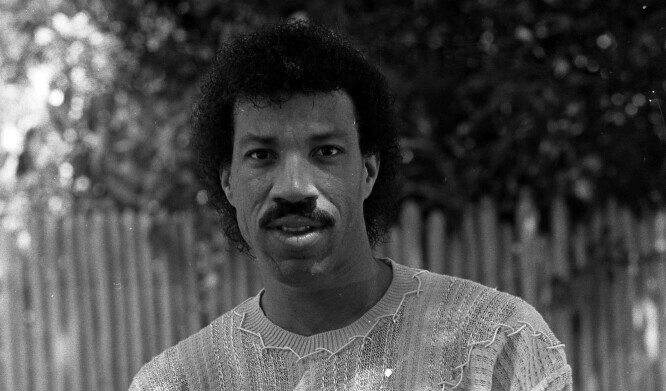
This was followed up with Running With The Night, another top ten hit at the end of 1983. Bigger hits were to follow, but at this point he was just getting started. Richie’s ability to mix catchy pop tunes with emotional depth is what set him apart – his songs perfect for those laid-back moments when you just want to relax and soak in some good vibes.
Which Singles Found Their Way Into My Collection?
Having managed to get hold of no more than about six or seven singles so far in the eighties, I managed a further three this year. Getting a paper round would see my record buying increase as we hit the mid-eighties.
The first of 1983’s singles was Joe Fagin with Breakin’ Away/That’s Livin’ Alright.
He may not have been a household name, but he had played the occasional gig on the same bill as the Beatles in Liverpool’s Cavern Club in the sixties. Moving into the seventies, Fagin’s main source of gainful employment had been either as a session musician or an advertising jingle writer.
In the eighties immediately before recording Breakin’ Away/That’s Livin’ Alright. Fagin had worked as musical director for erstwhile comedian Jim Davidson’s tour to the Falklands entertaining British troops following the Falklands War.
Featuring the theme tunes from the popular TV show Auf Wiedersehen, Pet, these tracks became a memorable part of 1983’s musical landscape – together they were a beloved gem. Diving into these songs gives an instant shot of nostalgia, and you’re in for a feel-good trip down memory lane.
The Christmas number one in 1983 was The Flying Pickets with their a cappella cover of Yazoo’s 1982 number 2 hit Only You. The combination of Vince Clarke’s original composition and group member David Brett’s arrangement, this song showed that great harmonies and simplicity can create something beautiful. Its pure vocal talent, delivering on the well-crafted melodies, lends it a timeless charm.
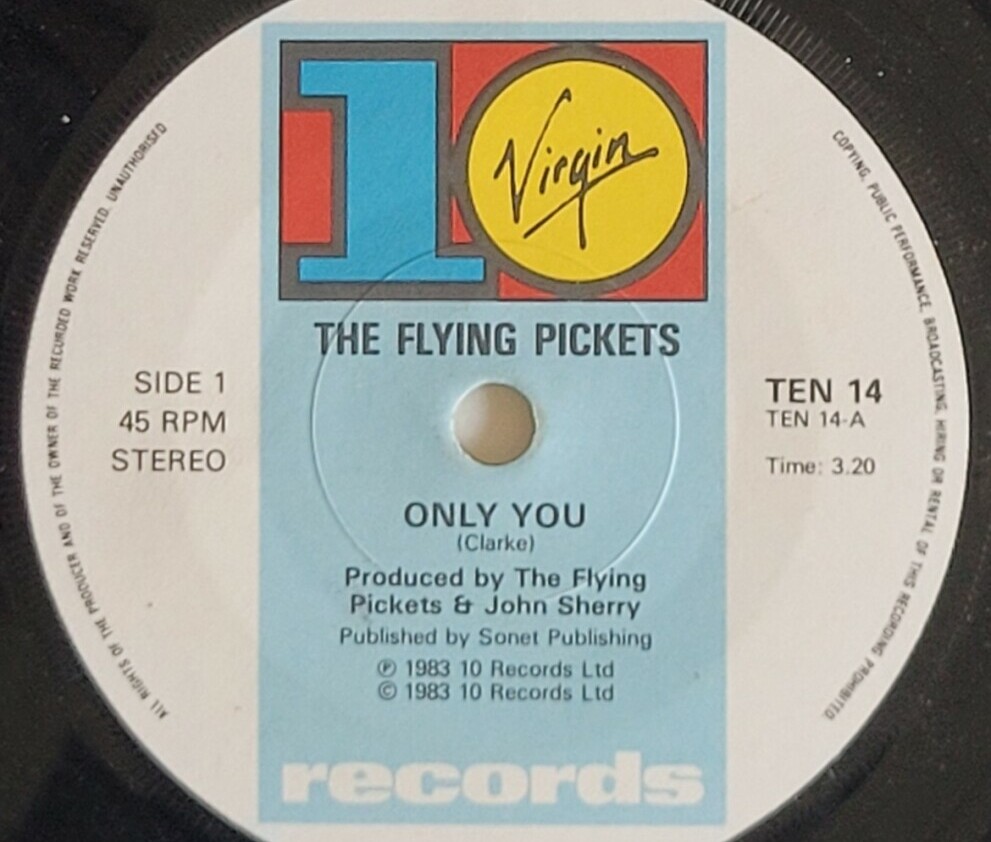
Perhaps the song was already familiar to listeners, but the new arrangement certainly struck a chord. Its melancholic lyrics and haunting melody made it a memorable and enduring classic. Only You remains one of The Flying Pickets’ most iconic tracks, symbolizing the peak of their commercial success.
The final single that came into my possession was by 70s glam rock stars Slade. My Oh My was a power ballad that heralded the return of the band to the top ten after a number of years of relative famine. Apart from 1981’s We’ll Bring The House Down, which reached number 10, Slade had not ventured as far as the top ten since 1975’s Thanks For The Memory.
My Oh My was a departure from those glam rock roots, demonstrating the band’s versatility. It’s got all the elements of a rock anthem – heartfelt lyrics, big choruses, and energy that’s hard to ignore. It’s worth a listen in order to experience the emotional possibilities offered by rock music in the 1980s.
Conclusion: The Legacy of 1983 in UK Music
1983 brought an eclectic mix of sounds and styles to the UK charts, marking a turning point in music history. The top singles were groundbreaking in more ways than one. Relatively new artists like Culture Club delivered new sounds. So did established stars like David Bowie as he sought new collaborators such as Chic’s Nile Rodgers.
Then we had old songs given new life. Paul Young’s reworking of Marvin Gaye’s early 60s run-of-the-mill track Wherever I Lay My Hat (That’s My Home) stood out. So too did the reworking of a much more recent song – The Flying Pickets’ treatment of Yazoo’s Only You from 1982.
New Order’s electronic innovations gave a new direction and a new impetus to a relatively new genre. 1983 also saw unexpected hits, capturing our hearts alongside established stars. Joe Fagin’s TV double A-side of Auf Wiedersehen, Pet theme tunes foreshadowing TV/music tie-ins such as those which were soon to launch the music careers of Kylie and Jason.
1983 demonstrated that the music scene could embrace a variety of genres, from synth-pop to reggae, and still produce chart-toppers with universal appeal. Exploring the year’s hits is like opening a treasure chest. Electronic music, feelgood pop, new-style reggae, heartfelt ballads, dance-floor anthems, or socially conscious lyrics, all bases were covered.
